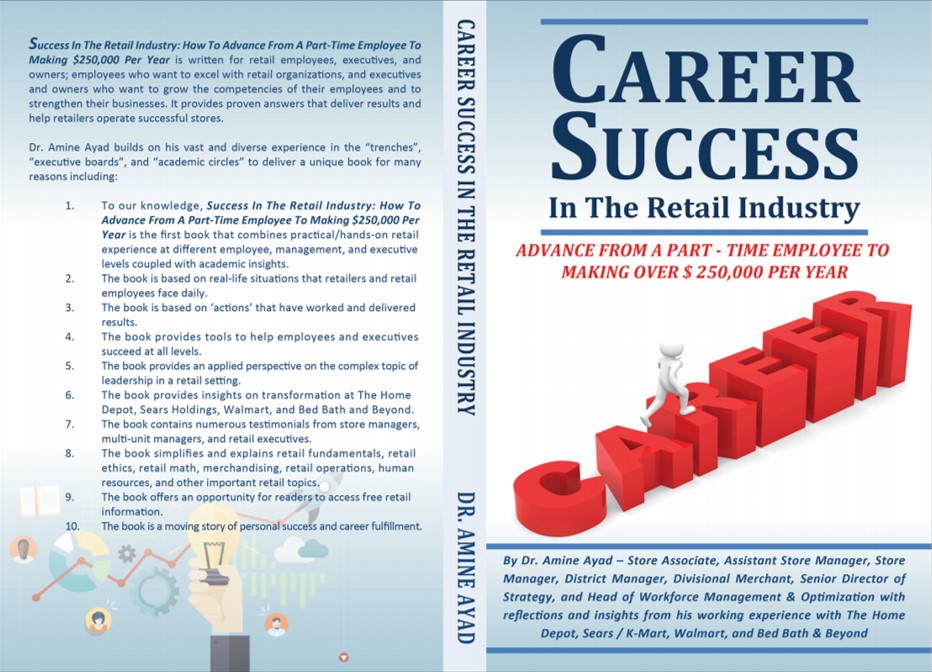Retail Industry
The U.S. Census Bureau announced today that advance estimates of U.S. retail and food services sales for December 2011, adjusted for seasonal variation and holiday and trading-day differences, but not for price changes, were $400.6 billion, an increase of 0.1 percent (±0.5%)* from the previous month and 6.5 percent (±0.7%) above December 2010. Total sales for the 12 months of 2011 were up 7.7 percent (±0.4%) from 2010. Total sales for the October through December 2011 period were up 7.0 percent (±0.5%) from the same period a year ago. The October to November 2011 percent change was revised from +0.2 percent (±0.5) to +0.4 percent (±0.2%).
Retail trade sales were virtually unchanged (±0.5%) from November 2011 and 6.3 percent (±0.7%) above last year. Nonstore retailers sales were up 10.6 percent (±2.5%) from December 2010 and gasoline stations sales were up 8.9 percent (±1.7%) from last year.
The Census Bureau of the Department of Commerce announced today (TUESDAY, AUGUST 17, 2010) that the estimate of U.S. retail e-commerce sales for the second quarter of 2010, adjusted for seasonal variation, but not for price changes, was $39.7 billion, an increase of 2.6 percent (±1.2%) from the first quarter of 2010. Total retail sales for the second quarter of 2010 were estimated at $971.4 billion, an increase of 1.1 percent (±0.5%) from the first quarter of 2010. The second quarter 2010 e commerce estimate increased 14.0 percent (±3.0%) from the second quarter of 2009 while total retail sales increased 7.5 percent (±0.5%) in the same period. E-commerce sales in the second quarter of 2010 accounted for 4.1 percent of total sales.
According to the U.S. Census Bureau (2009), total e-commerce sales for 2008 were estimated at $133.6 billion, an increase of 4.6 percent (±1.8%) from 2007. Total retail sales in 2008 decreased 0.6 percent (±0.4%) from 2007. E-commerce sales in 2008 accounted for 3.3 percent of total sales. In the past eight years this trend has been consistent with a growth range of 4.6 % to 32.6%. This growth rate is impressive, especially when compared to the moderate to weak traditional retail year over year sales growth in the same time-period (-0.6% to 6.5%). Further, the total number of “brick and mortar” retail establishments decreased by 0.7% from 1997 to 2002, but the number of non-store retailers increased by 23.5% (U.S. Census, 2002)
Internet Retailer identified top 10 US E-Retailers in sales volume as follows:
| Rank | Company | Web Sales Volume | Rank | Company | Web Sales Volume |
| 1 | Amazon.com Inc. | $19.2 B | 6 | OfficeMax Inc. | $3.1 B |
| 2 | Staples Inc. | $7.7 B | 7 | Sears Holding Corp. | $2.7 B |
| 3 | Dell Inc. | $4.8 B | 8 | CDW Corp. | $2.6 B |
| 4 | Office Depot Inc. | $4.8 B | 9 | Newegg.com | $2.1 B |
| 5 | Apple Inc. | $3.6 B | 10 | Best Buy | $2.0 B |
Retail Math
Selling Price or Retail Price ($) = Cost of Goods ($) + Markup ($)
Shrinkage
In June 2017, National Retail Federation and University of Florida National Retail Security Survey, reported an average shrink rate of 1.44 percent of retail sales, or $48.9 billion in 2016. Specifically, retailers surveyed estimate that shoplifting accounted for the largest part of reported shrink in 2016 – 36.5 percent, followed by employee/internal theft (30%), administrative and paperwork errors (21.3%), vendor fraud or error (5.4%) and unknown loss (6.8%).
| Shrink rate as a percent of Sale | 2016 | 2015 | 2014 |
| Average | 1.44% | 1.38% | 1.38% |
| Median | 1.20% | 1.21% | 1.18% |
| Shrink by type | 2016 | 2015 | 2014 |
| Shoplifting/external (including ORC) | 36.5% | 39.3% | 38.0% |
| Employee theft/internal | 30.0% | 35.8% | 34.5% |
| Administrative and paperwork error | 21.3% | 16.8% | 16.5% |
| Vendor fraud or error | 5.4% | 4.8% | 6.8% |
| Unknown loss | 6.8% | 7.2% | 6.1% |
In June 2015, National Retail Federation and University of Florida National Retail Security Survey, reported retail inventory shrink at 1.38 percent of retail sales, or $44 billion, in 2014. Specifically, retailers surveyed estimate that shoplifting accounted for the largest part of reported shrink in 2014 – 38 percent, followed by employee/internal theft (34.5%), administrative and paperwork errors (16.5%), vendor fraud or error (6.8%) and unknown loss (6.1%).
In June 2012, National Retail Federation indicated, based on preliminary survey results, that retail shrinkage decreased to1.41 percent of retail sales in 2011 ($34.5 billion), down from 1.49 percent in 2010 ($37.1 billion). According to the survey, the majority of retail shrinkage last year was due to employee theft, accounting for 43.9 percent of total losses. Additionally, shoplifting accounted for approximately 35.7 percent of total losses, up from just over 32 percent last year. Other losses included administrative error (12.1% of shrinkage) and vendor fraud (5.0% of shrinkage). Retailers said that the cause of the remaining shrinkage was unknown.
In June, 2011 National Retail Federation reported, based on preliminary survey results, that retail shrinkage increased to 1.58 percent of retail sales in 2010, up from 1.44 percent in 2009. According to the survey, total retail losses cost retailers $37.1 billion last year, up from $33.5 billion in 2009. According to the survey, the majority of retail shrinkage last year was due to employee theft, at $16.2 billion, accounting for 43.7 percent of total losses. Retailers reported that 18.7 percent of cases involved collusion between internal and external bad actors. Retailers lost $12.1 billion to shoplifting, which is 32.6 percent of total losses. Other losses included administrative error ($4.8 billion and 12.9% of shrinkage) and vendor fraud ($2 billion and 5.4% of shrinkage). Retailers said that the cause of the remaining shrinkage was unknown.
In June, 2007, National Retail Federation reported: “Though total retail losses continue to rise in correlation with industry sales, it is encouraging that shrinkage as a percentage of sales has stayed flat,” said Dr. Richard Hollinger, lead author of the report and a criminology professor at the University of Florida. “Retailers seem to be putting a dent in the amount of criminal activity in their stores, though they acknowledge they have a lot of work left to do.” According to the survey, the majority of retail shrinkage last year hit was due to employee theft, at $19.5 billion, which represented almost half of losses (47%). Shoplifting accounted for $13.3 billion, or about one-third (32%) of losses. Other losses included administrative error ($5.8 billion and 14% of shrinkage) and vendor fraud ($1.7 billion and 4% of shrinkage).
Bankruptcies
Many retail establishments were forced to declare bankruptcy including Allied Stores Corporation, Ames Department Stores, Ann & Hope, Bradlees, Caldor, CompUSA, Circuit City, G.C.Murphy’s, Globe, Goody’s, Hills, Jamesway, JM Fields, KB Toys, K-Mart, King’s, Federated Department Stores, Linens ‘n Things, Mattress Discounters, Mammoth Mart, Macy (R.H.) & Company, Montgomery Ward Holding Corporation, Rich’s, Steve & Barry’s, S&K Menswear, Stuart’s, The Circle K Corporation, Tweeter, Venture, Woolco, Woolworth, and Zayre. Berry, Sieders & Gresham (1997) counted the failure of more than 100,000 retail corporations between 1990 and 1996. Few establishments emerged from bankruptcy but the majority ceased to exist.
Simplicity & Complexity of
Big Box Retailing
A couple of years ago, I was asked to deliver a scholarship on behalf of the Winnipeg Chapter of the American Society for Quality in Manitoba, Canada alongside experienced career faculty offering scholarships to students. On the back stage, presenters (faculty members and guests) met for orientation prior to the ceremony. Most of the attendees introduced themselves as professors and/or other prestigious business roles. When my turn came, one could see eyebrows raised as I introduced myself as a Civil Engineer who have taught mathematics of finance at college level and working as a big box retail manager. I heard an unasked question: “how would retail fair with mathematics and engineering?” So, I volunteered an answer: as an engineer, in a highly predictable and well-defined physical laws, the most difficult equation I had to deal with involved few variables and few unknowns; but imagine an equation that has to do with 200 people who are influenced by hundreds of unknowns, and unpredictability interacting daily with over 1,000 customers who are influenced by hundreds of variables and unknowns to offer over 35,000 products and services ranging from a simple nut and nail to sophisticated appliances and kitchens manufactured and/or imported from local communities or from across the glob to drive $35 million business or more. Trust me, I emphasized, I tried mathematical modeling but I could not build that equation. Indeed, I propose that mathematical problem for a contest challenge. Yet, proud and inspired retail managers and employees deal with this equation day in and day out; and deliver unparallel products and services.
About Us
Dedicated to the retail industry. We have influenced transformation at The Home Depot and Walmart at the design and implementation levels.
The U.S. Census Bureau announced today that advance estimates of U.S. retail and food services sales for December 2011, adjusted for seasonal variation and holiday and trading-day differences, but not for price changes, were $400.6 billion, an increase of 0.1 percent (±0.5%)* from the previous month and 6.5 percent (±0.7%) above December 2010. Total sales for the 12 months of 2011 were up 7.7 percent (±0.4%) from 2010. Total sales for the October through December 2011 period were up 7.0 percent (±0.5%) from the same period a year ago. The October to November 2011 percent change was revised from +0.2 percent (±0.5) to +0.4 percent (±0.2%).

Why Success in Retail
The U.S. Census Bureau announced today that advance estimates of U.S. retail and food services sales for December 2011, adjusted for seasonal variation and holiday and trading-day differences, but not for price changes, were $400.6 billion, an increase of 0.1 percent (±0.5%)* from the previous month and 6.5 percent (±0.7%) above December 2010. Total sales for the 12 months of 2011 were up 7.7 percent (±0.4%) from 2010. Total sales for the October through December 2011 period were up 7.0 percent (±0.5%) from the same period a year ago. The October to November 2011 percent change was revised from +0.2 percent (±0.5) to +0.4 percent (±0.2%).
Contact Us


